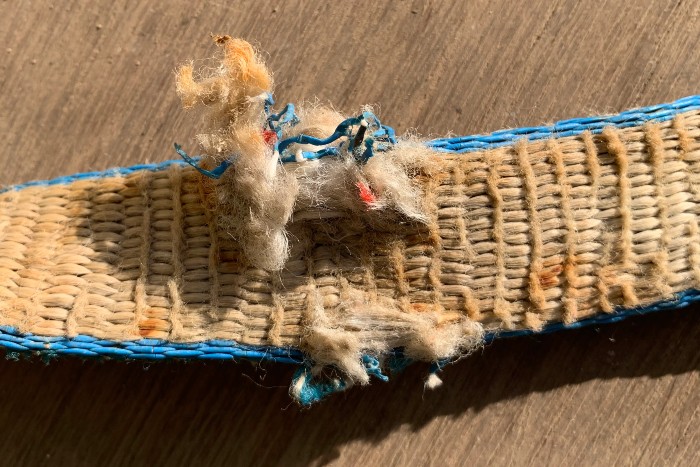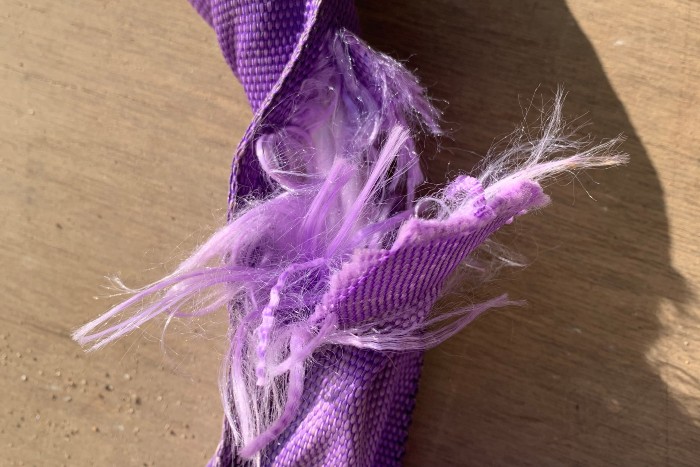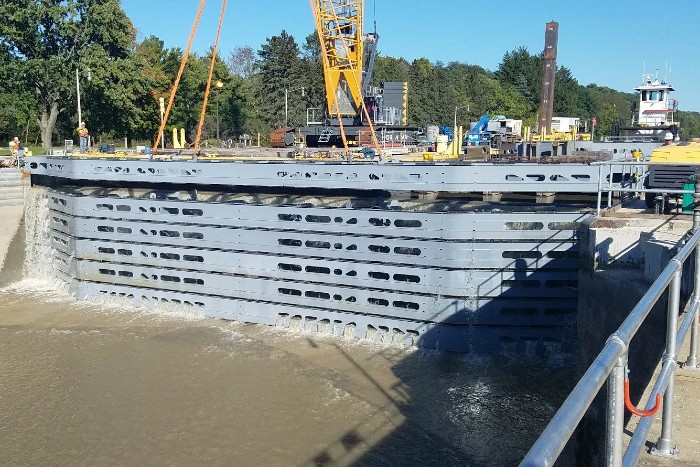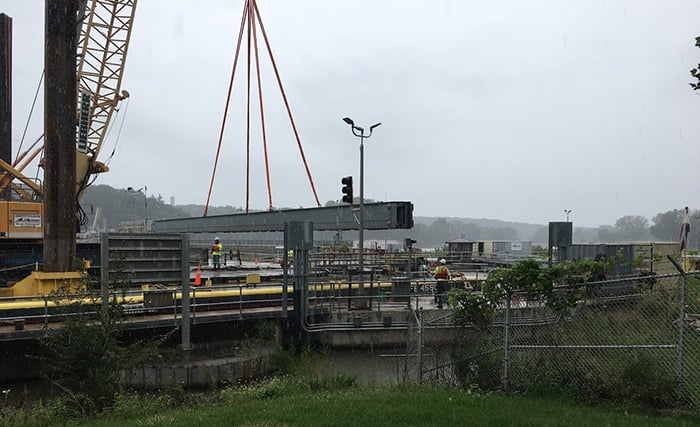In industries like marine construction, the penalty for skipping or rushing through “simple” industrial rigging inspections or “ordinary” storage practices can be catastrophic for all of our equipment and tools, but most importantly for the people involved.
For example, Brennan uses endless and synthetic slings (straps or tie downs) to hoist and secure all kinds of materials: from piping and equipment, to dredges and other vessels. Reliable slings are critical to the work we do. We must ensure they are in excellent working condition before we use them and maintain them for our teammates who must safely use them next. Here are a few important questions we answer from curious customers and our own people.
What are the biggest causes of sling damage?
Normal wear-and-tear on rigging equipment contributes to most of the damage we see on slings. Beyond that, poor storage and transfer practices such as leaving slings exposed to sun or other weather conditions when not in use. Dragging slings from one place to another and causing snags is another; as are not blocking underneath a sling or using softeners on sharp edges can all damage the rigging material.
 How dangerous are damaged slings?
How dangerous are damaged slings?
Rigging that suddenly fails can instantly produce disasters to lives and property. When these straps break, everything literally drops. It’s impossible to overstate the damage to equipment and - most importantly - people who are hurt, sometimes fatally, when weakened slings suddenly snap or unravel. There are other tragedies which lie in-wait. If a sling breaks during a heavy lift, it can flip the crane, leading to more human suffering and property damage.
We recently removed 30 slings off of our own job sites. Safety team inspections showed that these materials should not be used. But field sling and rigging equipment inspections didn’t catch the problems. Obviously, no mishaps occurred, but that’s not the point. All slings, straps and tie-downs should be constantly monitored and replaced at the earliest sign they might be unsafe.
What should we do when we find a sling that needs replacement?
We rely heavily on our safety and asset management departments to order new slings, using trusted vendors to quickly send it to a site. Whether purchasing your own or requesting a new sling from your company, don’t forget to cut the old strap and throw it away so no one later uses it by mistake.

Best practices of sling use, storage and preservation
- DO conduct inspections every time before use.
- DON’T set a load directly on a sling. Use blocking to hold it off the rigging and eliminate the risk of the webbing being crushed or abraded.
- DON’T pull a sling from under a load when it’s resting on the straps; or from under loads that restrict the sling’s movement.
- DO use corner softeners to prevent damage to slings that contact the edges, protrusions, or corners of a load.
- DON’T shock-load slings.
- When using multiple baskets or choker hitches, DO rig the load so that straps have secure contact with the load and cannot slip or slide along it.
- When using a choke hitch, DON’T allow any sling’s potential weak points to be on a splice or fitting.
- All sling legs must equally lift and support the load! DON’T allow leg (or any strap or tie-down component) to constrain other sling legs.
- DON’T use the sling in a way that may allow the load to shift and/or slide over any surface it comes into contact with. Slowly and smoothly lift and lower.
Immediately remove slings from service under any of the following conditions
- Missing or illegible sling identification.
- Acid or caustic burns.
- Broken or worn stitches.
- Small cuts, snags, holes, tears or fraying which expose core yarns.
- Broken or damaged core yarns.
Don’t court disaster. Remember: “If there’s red, it’s dead.” Industrial rigging manufacturers use different colored strings (often red) within the sling to provide an easy way to detect damage which requires you to remove the sling from service. Like the tread wear indicator bar on car tires. Seeing red, or the indicator thread, is a sure sign of something easily noticeable when inspecting slings. But clearly, other even more subtle damage may still exist enough to remove the sling from service.
Perform every inspection as carefully as if a life depends on it. Because it does!



